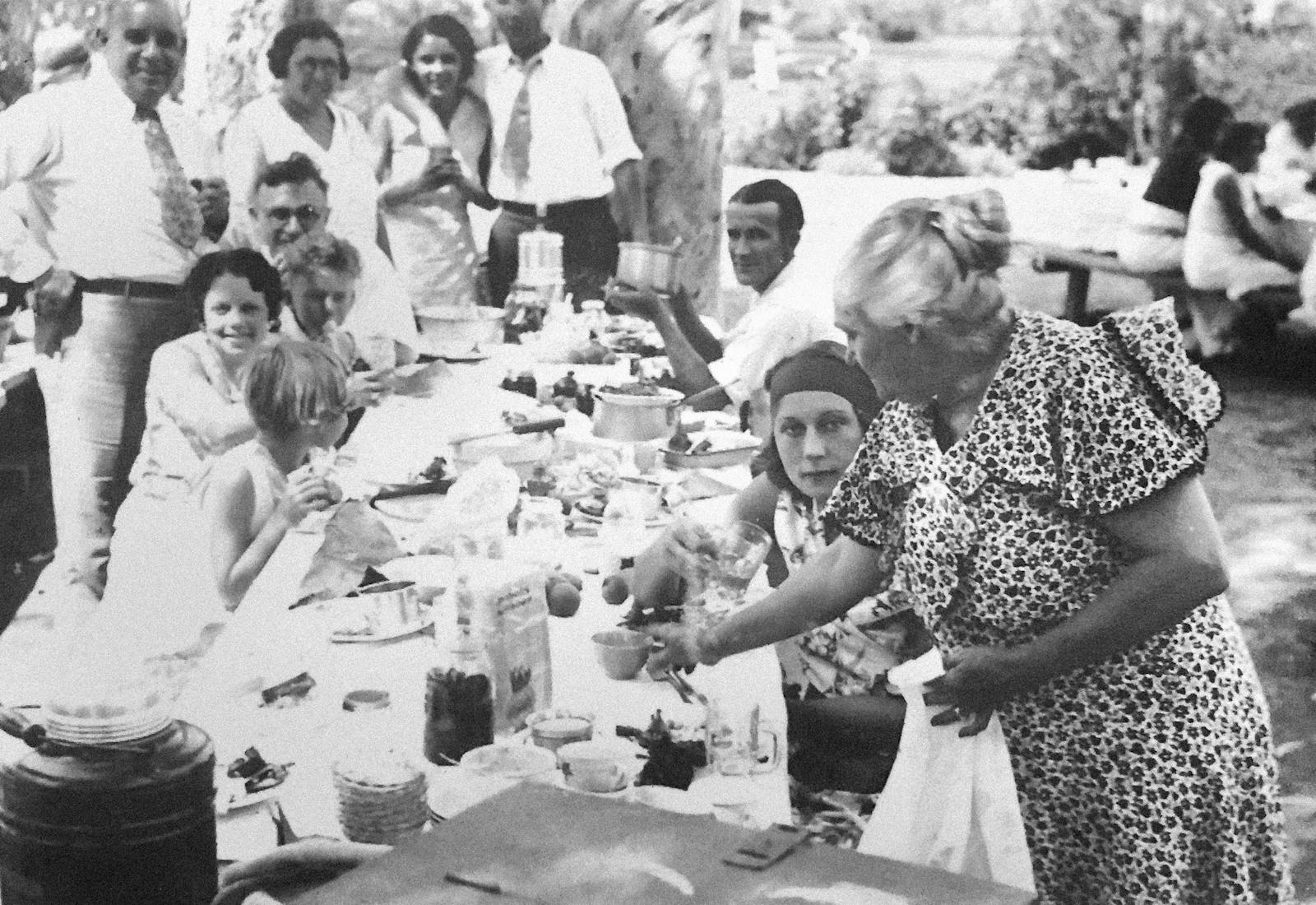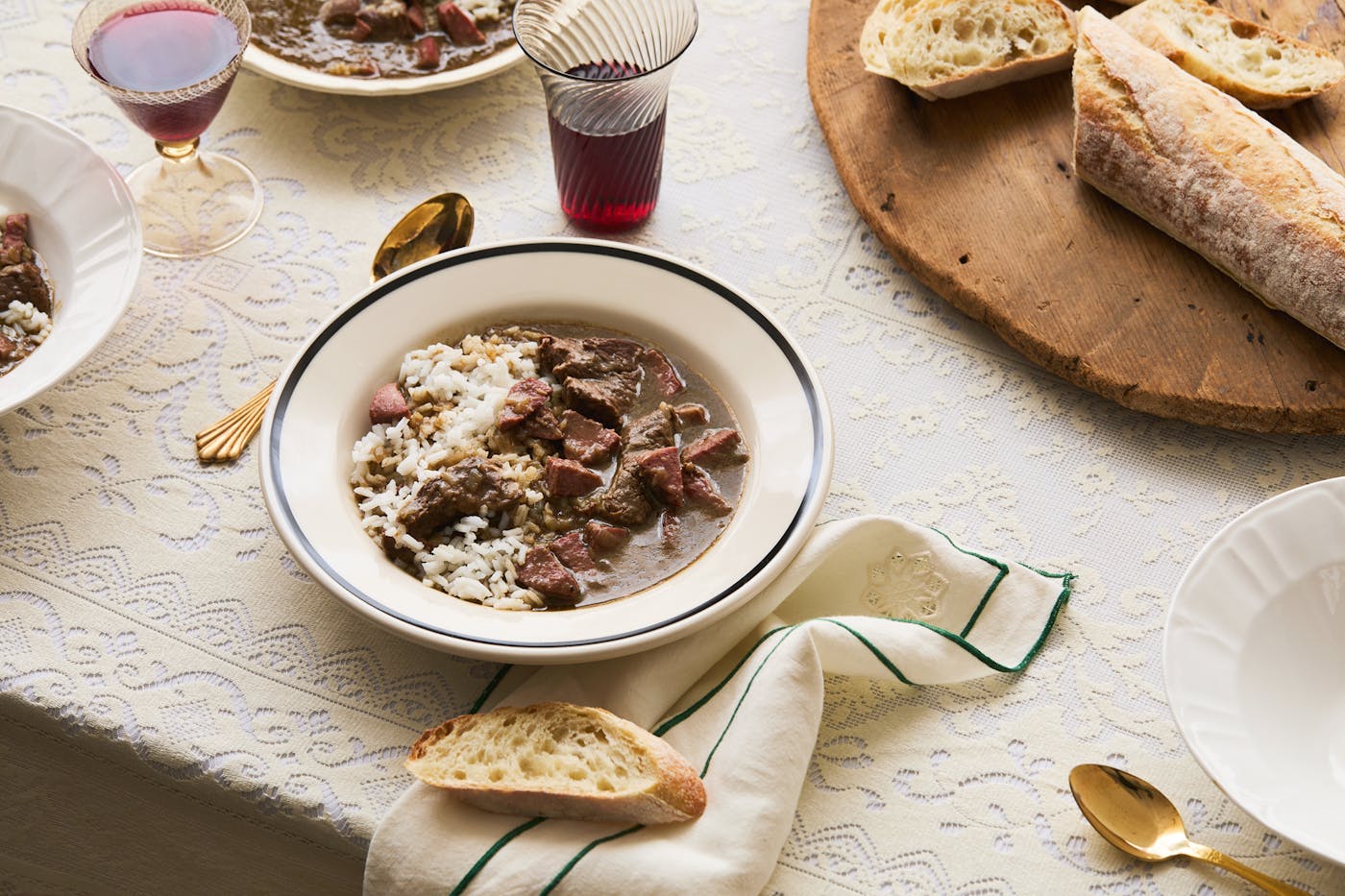Shared by Lizzy Cooper


Lizzy Cooper is a New York City-based private chef, food stylist, educator, and trained social worker with an MSW from UCLA. Lizzy teaches “Food as Home, Identity, and Freedom: Writing the Stories that Nourish Us,” a creative food writing workshop to formerly incarcerated individuals at the Fortune Society. This is her family’s story, told by her.
I grew up in Los Angeles in a home where traditions from my Catholic father lived right alongside those from my Jewish mother. In kindergarten, I started Jewish Sunday school, and a few years later, Hebrew school in preparation for my Bat Mitzvah. As an infant I was baptized in the Catholic church, and I attended St. Jerome Catholic School, where some of my teachers were nuns and weekly Mass was part of the curriculum. On Tuesdays and Thursdays, my Jewish Grandpa Sam would pick me up in his giant Buick, driving me straight from Catholic school to Hebrew school, still in my red plaid skirt and polo shirt embroidered with a cross.
Both sides of my family maintain strong food traditions. Each Rosh Hashanah, I gathered with my large Jewish family around the table at Grandpa Sam and Grandma Lil’s cozy Wilshire Boulevard condo, eating brisket, kugel, and apples dipped in honey. Hanukkah meant crisp latkes with applesauce, and nothing tasted better than the first bite of a bagel with lox and cream cheese after the Yom Kippur fast.
From my father’s side came Christmas mornings with presents under a tree my Jewish mother had lovingly decorated, followed by giant family gatherings brimming with prime rib, mashed potatoes, and eggnog. On Easter morning, a basket left by the Easter bunny at the foot of my bed overflowed with neon green grass, chocolate eggs, and jellybeans. And at countless gatherings with my dad’s seven siblings and Grandma Betty and Grandpa Paul, we circled a steaming pot of our family’s famous gumbo, celebrating simply being together and honoring a tradition passed down by the Creole side of our family from Louisiana.
This gumbo may be simple in form — built on a rich, dark-amber roux with tender chunks of beef and salty salami — but its history is layered and complex. The recipe comes from my great-great-grandmother, Mathilda Landry Frilot, of Opelousas, Louisiana. Mathilda and her husband Robert raised their family in a community known as Frilot Cove — a settlement founded by our relatives in 1860.
Before the Civil War, their families were labeled on official documents like marriage bonds as FMC or FWC — Free Man of Color or Free Woman of Color. And, even after the Civil War during the Jim Crow era, everybody in my great-great-grandmother’s family was still listed on the decennial U.S. Census as “M” for mulatto. Seeking safety and self-determination in a violent, segregated world, the families of Frilot Cove built a community of their own, complete with farms, homes, a church, a school, and grocery stores.
History pressed hard on Opelousas, and in the fall of 1868, the town became the site of one of the bloodiest Reconstruction-era massacres. White residents — including members of nearby white supremacist groups like the Knights of the White Camelia and local Democratic vigilantes determined to suppress the Black vote — unleashed terror ahead of the presidential election, killing an estimated 200 people and devastating the community.
While my relatives, the Frilots, survived the massacre, they continued to face segregation and racial persecution. In 1919, my great-great-grandparents decided to uproot the family and move westward to Los Angeles to start a new life. Once they arrived, their light skin allowed them to “pass” as white, as evidenced by the “W” beside their names in the 1920 Census. They abandoned their Black heritage, never speaking of it, and lived in their new world as white people.
But they brought their gumbo to LA, continuing to enjoy it at family gatherings. After her parents passed, my grandma Betty — an extraordinary cook — carried on the tradition, centering family celebrations around the gumbo. I grew up eating it and each bite offered a specific familiarity and comfort.
A few years ago, Grandma Betty came to my Echo Park bungalow to teach me the recipe, and we stood over the stove for nearly an hour, stirring the roux (which my Grandma always makes sure to mention is the secret and most important component of a good gumbo) until it reached its perfect dark chocolate-brown color and smooth, glossy consistency. Even my Jewish grandparents, Sam and Lil, who certainly did not grow up with gumbo, got to enjoy it on several occasions and loved it.
My family history is beautifully complex — a rich tapestry of Judaism and Catholicism, Hebrew school and weekly Mass, matzah ball soup and Creole gumbo. When I tell people about my upbringing, they often ask if it ever confused me. It never did. I was raised Jewish and have always identified as Jewish. Still, my father’s family traditions run deep, and I carry an abiding pride in them. Creole gumbo is part of the fabric of who I am.
